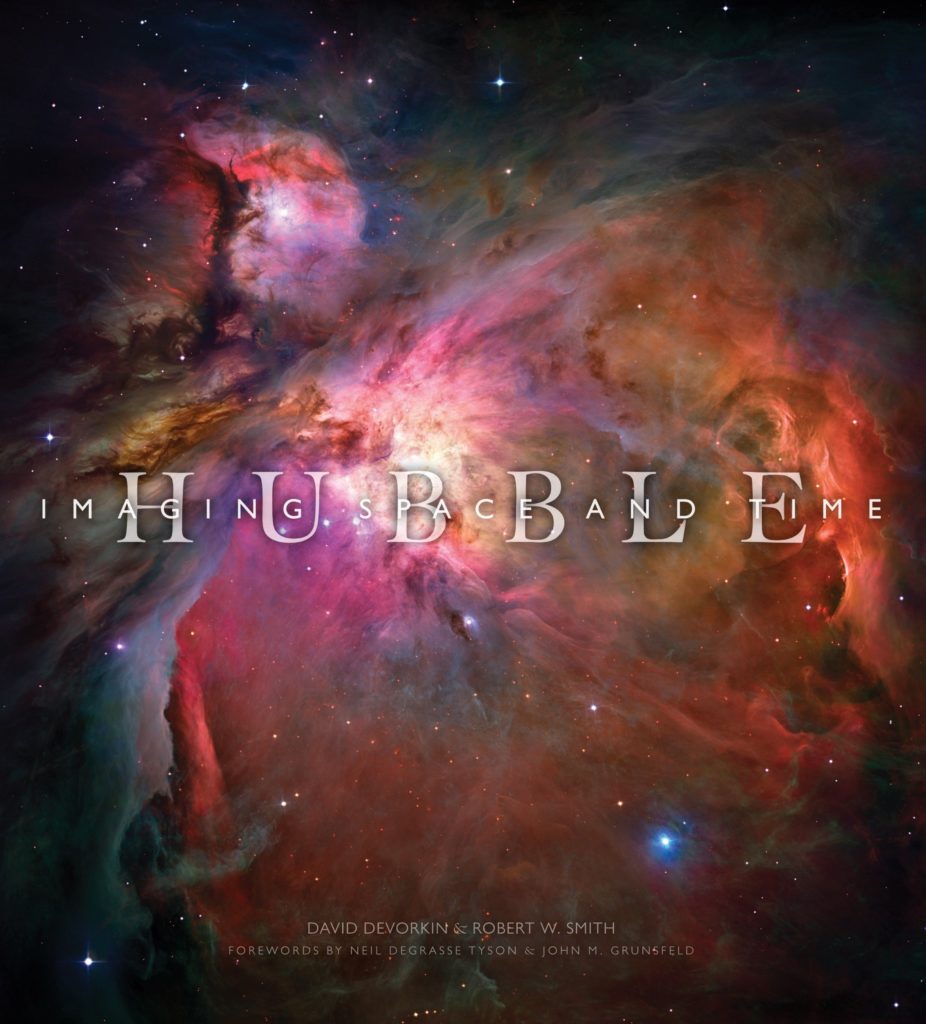Foreword: Hubble On My Mind
From Hubble: Imaging Space and Time by David H. Devorkin and Robert Smith.

Right now, about a dozen spaceborne telescopes of assorted sizes and shapes are out there, providing astrophysicists with a clear view of the cosmos—unobstructed, unblemished, and undiminished by Earth’s atmosphere.
Nearly all of them are designed to detect bands of light invisible to the human eye. You can easily recognize these parts of the spectrum from their earthly applications; they include microwaves, infrared, x-rays, and gamma rays. Entire classes of objects and phenomena in the cosmos reveal themselves only through one or more of these invisible cosmic windows.
As important as these telescopes are to advancing the research frontier, most perform their duties without the public’s awareness or recognition. Not so the Hubble Space Telescope. The beloved Hubble Telescope—with its stunningly crisp, colorful, and detailed images of the cosmos, is the first and only space telescope to image the universe in visible light, becoming, for us, a supreme version of our eyes in space.
Yet the Hubble’s appeal to us all derives from much more than vicarious cosmic vistas. The Hubble came of age in the early 1990s, during an exponential growth of the public’s access to the Internet. That’s when the Hubble’s digital images, obtained via tax-based dollars to NASA, were first cast into the public domain. As we all know, anything fun, free, and forwardable spreads rapidly across the Internet. The Hubble images, one more splendorous than the next, became screen savers and desktop “wallpaper” for computers owned by people who would never before have had the occasion to celebrate, however quietly, our place in the universe.
Not only that, most space telescopes are launched with no means of servicing them. Parts wear out. Gyroscopes fail. Batteries die. These hardware realities typically limit a telescope’s life expectancy to anywhere from three to seven years. Not so the Hubble. It was designed, built, and launched to be serviced by shuttle astronauts, granting the Hubble unprecedented longevity for a space-based telescope. And with smart engineering and clever retrofitting, the Hubble’s talents were not simply sustained over the years; mission by mission, they were vastly improved.
With the Hubble Space Telescope well into its second decade of performance, students in high school have never known a time without the Hubble as their conduit to the cosmos. Hubble brought the universe into our backyard, with images so intellectually and spiritually fulfilling that they don’t even need captions. It practically didn’t matter what the image contained: planets, star fields, interstellar nebulae, black holes, colliding galaxies, fields of galaxies. You were content just to gaze at them.
In 2004, when NASA announced that the Hubble would not receive its fifth servicing mission—which would prolong its life yet another five years, maybe ten—there was an outcry. And the loudest voices were not the scientists, but the general public. Akin to a modern version of a torch-wielding mob, there were angry editorials, op-eds, letters to the editor, and talk shows on radio and television, all urging NASA to restore the funding and keep the Hubble alive. At last, following pressure from Congress, NASA reversed its decision—the Hubble would be serviced one last time.
Something remarkable had occurred: The public took ownership of the Hubble Space Telescope. I know of no time in the history of civilization when the masses banded together to save a scientific instrument. So for perhaps another decade, the Hubble will continue to do what it does best for one and all: bring the universe down to Earth.

